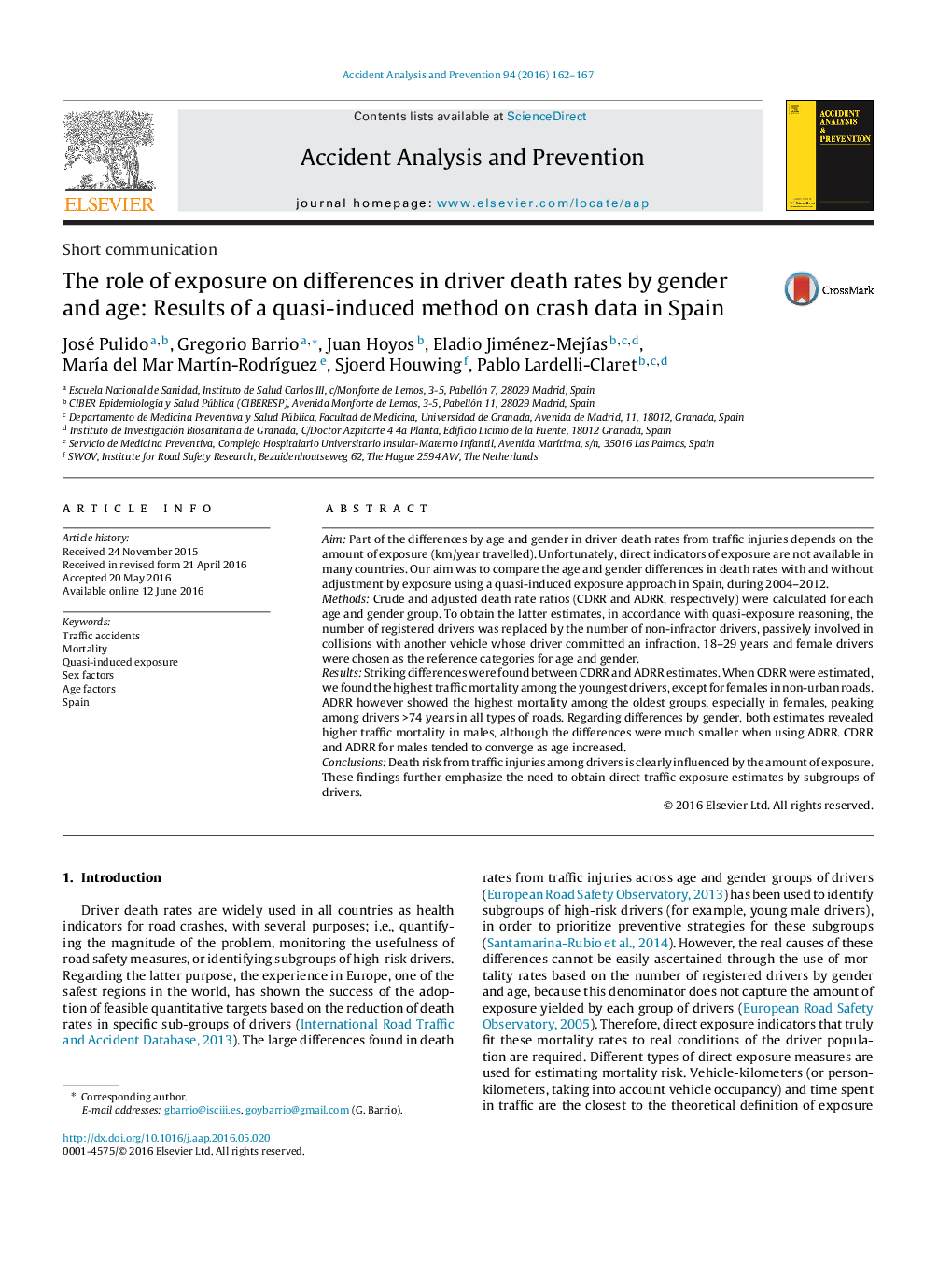| Article ID | Journal | Published Year | Pages | File Type |
|---|---|---|---|---|
| 572018 | Accident Analysis & Prevention | 2016 | 6 Pages |
•Part of the age and gender differences in driver death rates (DDR) depends on the exposure.•However, direct indicators of exposure are not available in many countries.•When using quasi-induced exposure methodology an increased adjusted DDR for older drivers were found.•The increased risk of death for male drivers was reduced when adjusted DDR were used.•Direct traffic indicators of exposure are needed by sub-groups of drivers.
AimPart of the differences by age and gender in driver death rates from traffic injuries depends on the amount of exposure (km/year travelled). Unfortunately, direct indicators of exposure are not available in many countries. Our aim was to compare the age and gender differences in death rates with and without adjustment by exposure using a quasi-induced exposure approach in Spain, during 2004–2012.MethodsCrude and adjusted death rate ratios (CDRR and ADRR, respectively) were calculated for each age and gender group. To obtain the latter estimates, in accordance with quasi-exposure reasoning, the number of registered drivers was replaced by the number of non-infractor drivers, passively involved in collisions with another vehicle whose driver committed an infraction. 18–29 years and female drivers were chosen as the reference categories for age and gender.ResultsStriking differences were found between CDRR and ADRR estimates. When CDRR were estimated, we found the highest traffic mortality among the youngest drivers, except for females in non-urban roads. ADRR however showed the highest mortality among the oldest groups, especially in females, peaking among drivers >74 years in all types of roads. Regarding differences by gender, both estimates revealed higher traffic mortality in males, although the differences were much smaller when using ADRR. CDRR and ADRR for males tended to converge as age increased.ConclusionsDeath risk from traffic injuries among drivers is clearly influenced by the amount of exposure. These findings further emphasize the need to obtain direct traffic exposure estimates by subgroups of drivers.
